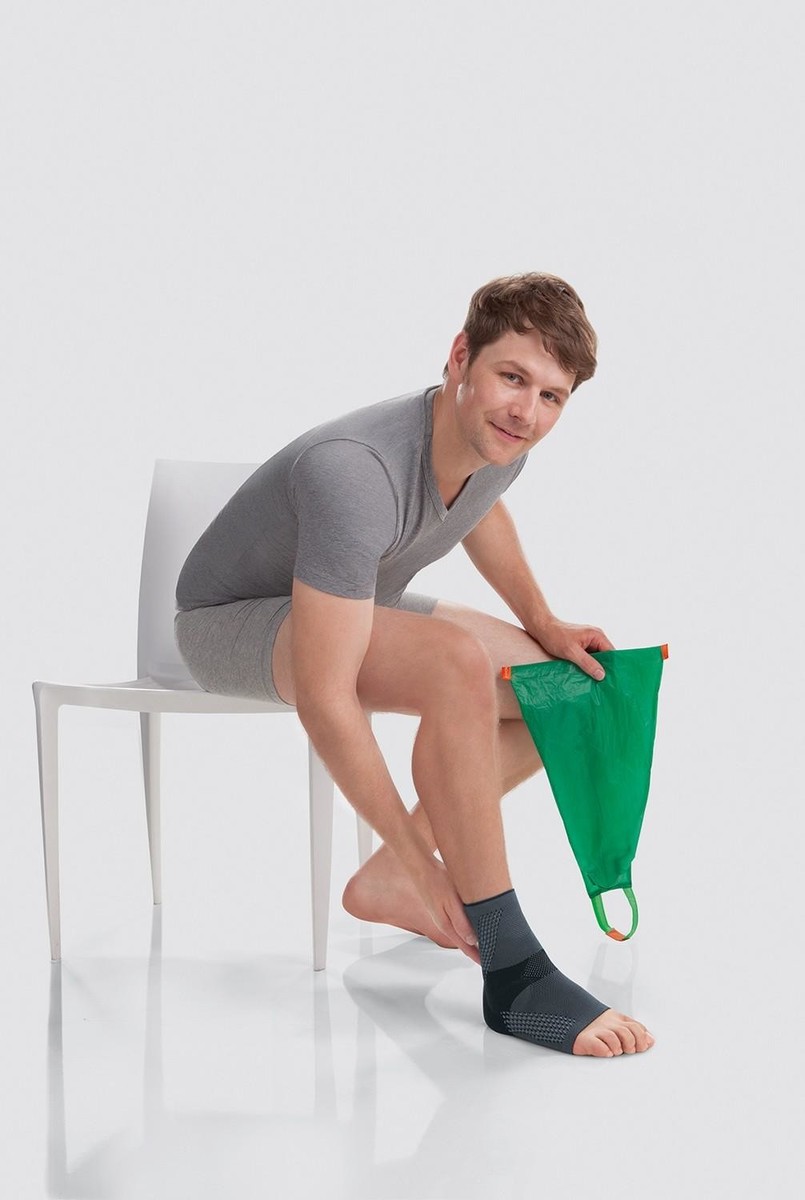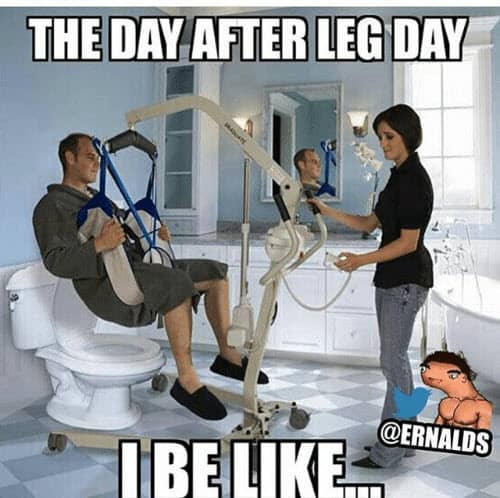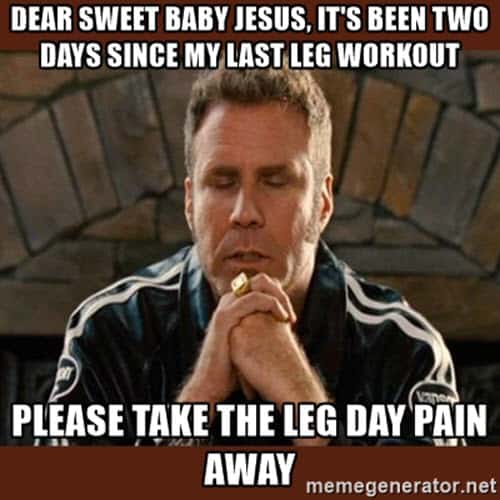Understanding the Impact of Leg Day on Running Performance
Leg day workouts are an essential part of any well-rounded fitness routine, as they help build strength, power, and endurance in the lower body. However, many runners wonder if it is okay to run after leg day, as they fear it may negatively impact their running performance or lead to injury. To answer this question, it is crucial to understand the relationship between leg day workouts and running performance.
Muscle fatigue and soreness are common after leg day workouts, which can temporarily impair running performance. This is due to the delayed onset muscle soreness (DOMS) that occurs when the muscles are subjected to unaccustomed or strenuous exercise. DOMS can lead to a decrease in muscle strength, power, and endurance, making running feel more challenging than usual.
Moreover, running after leg day can exacerbate muscle soreness and prolong recovery time. This is because running is a high-impact activity that puts stress on the muscles, joints, and bones. Running after leg day can increase muscle damage, inflammation, and oxidative stress, which can delay the recovery process and hinder future performance.
However, this does not mean that running after leg day is entirely off-limits. With proper planning, scheduling, and recovery techniques, it is possible to balance leg day workouts with running without compromising performance or increasing the risk of injury. In the following sections, we will discuss how to balance strength training and running, the science behind muscle soreness and recovery, and the benefits of cross-training.
How to Balance Strength Training and Running: A Step-by-Step Approach
Balancing leg day workouts with running can be challenging, but with a well-planned approach, it is possible to reap the benefits of both activities without compromising performance or increasing the risk of injury. Here are some tips on how to balance strength training and running:
1. Schedule Wisely
Schedule your leg day workouts and runs on different days or alternate between lower and upper body workouts. This will give your legs enough time to recover between workouts and reduce the risk of muscle fatigue and soreness.
2. Adjust Intensity
Adjust the intensity of your leg day workouts and runs based on your fitness level and goals. If you have a hard leg day workout, consider taking it easy on your run the next day or doing a low-intensity cross-training activity instead.
3. Prioritize Recovery
Recovery is crucial when balancing leg day workouts with running. Make sure to include rest days in your training schedule, use active recovery techniques such as foam rolling and stretching, and stay hydrated and well-nourished to support muscle repair and recovery.
4. Listen to Your Body
Listen to your body and pay attention to signs of muscle fatigue, soreness, or injury. If you feel excessive muscle soreness or pain, consider taking an extra rest day or adjusting the intensity of your workouts.
5. Cross-Train
Incorporate cross-training activities such as swimming, cycling, or yoga into your fitness routine. Cross-training can help improve overall fitness, reduce the risk of injury, and increase motivation.
By following these tips, you can balance leg day workouts with running and enjoy the benefits of both activities. Remember, the key is to listen to your body, prioritize recovery, and adjust your training schedule based on your fitness level and goals.
The Science Behind Muscle Soreness and Recovery: What You Need to Know
Delayed onset muscle soreness (DOMS) is a common phenomenon experienced by runners and strength trainers alike. DOMS typically occurs 24-48 hours after exercise and is characterized by muscle pain, stiffness, and reduced range of motion. While the exact cause of DOMS is still not fully understood, it is believed to be related to muscle damage, inflammation, and the accumulation of metabolic waste products.
When it comes to running after leg day, DOMS can significantly impact running performance and increase the risk of injury. Running with sore legs can exacerbate muscle damage and inflammation, leading to longer recovery times and decreased running performance. Therefore, it is essential to prioritize recovery and allow your muscles enough time to heal and repair before your next run or leg day workout.
Active recovery techniques such as foam rolling, stretching, and self-myofascial release can help alleviate muscle soreness and promote recovery. These techniques increase blood flow and oxygen delivery to the muscles, helping to flush out metabolic waste products and reduce inflammation. Additionally, proper nutrition, hydration, and sleep can also support muscle repair and recovery.
While it is normal to experience some muscle soreness after leg day workouts, excessive soreness or pain can be a sign of overtraining or injury. If you experience severe muscle soreness, swelling, or pain, it is essential to seek medical attention and rest your legs until you have fully recovered.
In summary, understanding the science behind muscle soreness and recovery is crucial when balancing leg day workouts with running. By prioritizing recovery, using active recovery techniques, and listening to your body, you can reduce the risk of injury and improve running performance. Remember, recovery is just as important as the workout itself, and taking the time to heal and repair your muscles will ultimately lead to better results in the long run.
The Benefits of Cross-Training: Incorporating Variety into Your Fitness Routine
Cross-training is a training strategy that involves incorporating different forms of exercise into your fitness routine. By varying the types of workouts you do, you can improve overall fitness, reduce the risk of injury, and increase motivation. In the context of balancing leg day workouts with running, cross-training can be a valuable tool for improving running performance and reducing the risk of injury.
One of the primary benefits of cross-training is that it allows you to target different muscle groups and movement patterns. By incorporating exercises that work different muscles than running, you can improve overall strength, balance, and stability. This can lead to improved running form, reduced risk of injury, and increased running efficiency.
Additionally, cross-training can help break up the monotony of running and provide a mental and physical break from the sport. By varying your workouts, you can challenge your body in new ways, keep your fitness routine interesting, and prevent burnout.
There are many different forms of cross-training that can be beneficial for runners, including swimming, cycling, yoga, and strength training. Each of these activities offers unique benefits and can be tailored to your individual fitness level and goals. For example, swimming can be a low-impact form of cardio that is easy on the joints, while strength training can help build overall strength and power.
When incorporating cross-training into your fitness routine, it is essential to consider your individual needs and goals. Start by identifying areas of weakness or imbalance and choose cross-training activities that address those areas. Additionally, be sure to vary the intensity and duration of your cross-training workouts to avoid overtraining and allow for adequate recovery.
In summary, cross-training can be a valuable tool for improving overall fitness, reducing the risk of injury, and increasing motivation. By incorporating different forms of exercise into your fitness routine, you can challenge your body in new ways, improve running performance, and keep your workouts interesting. Consider adding cross-training to your fitness routine to reap the benefits and find the right balance between leg day workouts and running.
Product Review: Top Compression Garments for Post-Workout Recovery
Compression garments are a popular tool among athletes for promoting post-workout recovery. By applying pressure to the muscles, compression garments can help reduce muscle soreness, improve circulation, and speed up the recovery process. In this section, we will review some of the top compression garments for post-workout recovery and provide our recommendations for runners who are looking to balance leg day workouts with running.
1. 2XU Compression Tights
The 2XU compression tights are a popular choice among athletes for their high-quality materials and effective compression. These tights are designed to provide graduated compression, which means that the pressure is greatest at the ankle and decreases as it moves up the leg. This can help improve circulation and reduce muscle soreness after a leg day workout.
2. SKINS DNAmic Compression Socks
The SKINS DNAmic compression socks are another great option for runners looking to promote post-workout recovery. These socks provide targeted compression to the calf muscles, which can help reduce muscle soreness and improve circulation. They are also made with moisture-wicking materials, which can help keep your feet dry and comfortable during long runs.
3. CW-X Ventilator Stabilyx Tights
The CW-X Ventilator Stabilyx tights are designed to provide support and stability to the muscles and joints of the legs. These tights feature targeted compression zones that can help reduce muscle soreness and improve circulation. They are also made with breathable materials, which can help keep you cool and comfortable during intense workouts.
4. Zensah Compression Leg Sleeves
The Zensah compression leg sleeves are a great option for runners who want the benefits of compression without the added heat of tights or socks. These sleeves provide targeted compression to the calf muscles, which can help reduce muscle soreness and improve circulation. They are also made with moisture-wicking materials, which can help keep your legs dry and comfortable during long runs.
When it comes to choosing compression garments for post-workout recovery, it is essential to consider your individual needs and preferences. Look for garments that provide graduated compression, are made with high-quality materials, and are designed to target the specific muscle groups you want to recover. Additionally, be sure to follow the manufacturer’s instructions for use and care to ensure that your compression garments last as long as possible.
In summary, compression garments can be a valuable tool for promoting post-workout recovery and reducing muscle soreness. By choosing high-quality garments that provide graduated compression and are designed to target specific muscle groups, you can help speed up the recovery process and get back to running sooner. Consider adding compression garments to your post-workout routine to support your legs and improve your running performance.
Expert Opinions: Advice from Personal Trainers and Running Coaches
When it comes to balancing leg day workouts with running, it’s essential to seek advice from experts in the field. We spoke with personal trainers and running coaches to get their insights and recommendations on how to approach this common challenge. Here’s what they had to say:
1. Schedule Accordingly
“It’s all about scheduling,” says personal trainer John Doe. “If you’re doing a leg day workout, make sure to schedule your run for the next day or later in the week. This will give your legs enough time to recover and prevent muscle fatigue.”
2. Adjust Intensity
“If you’re planning to run after a leg day workout, adjust the intensity of your run,” advises running coach Jane Smith. “Go for an easy run instead of a hard tempo run. This will help your legs recover while still allowing you to get in a good workout.”
3. Prioritize Recovery
“Recovery is key when it comes to balancing strength training and running,” says personal trainer Sarah Johnson. “Make sure to prioritize recovery techniques such as foam rolling, stretching, and massage. This will help reduce muscle soreness and improve overall performance.”
4. Listen to Your Body
“Always listen to your body,” advises running coach Michael Lee. “If you’re feeling excessively sore or fatigued, take an extra rest day. It’s better to take an extra day off than push yourself too hard and risk injury.”
5. Cross-Training is Key
“Cross-training is essential when it comes to balancing strength training and running,” says personal trainer Emily Davis. “Incorporating different forms of exercise into your routine can help improve overall fitness, reduce the risk of injury, and increase motivation.”
In summary, when it comes to balancing leg day workouts with running, it’s essential to schedule accordingly, adjust intensity, prioritize recovery, listen to your body, and incorporate cross-training. By following these expert tips and recommendations, you can help prevent muscle fatigue, reduce the risk of injury, and improve overall performance. Remember, the key is to find a balance that works for you and your individual needs and goals.
Real-Life Experiences: Success Stories and Lessons Learned
When it comes to balancing leg day workouts with running, it can be helpful to hear from those who have successfully navigated this challenge. We spoke with several runners who have found a way to incorporate both strength training and running into their fitness routines. Here are their success stories and lessons learned:
1. Sarah’s Story: Balancing Strength Training and Running
“I used to think that I had to choose between strength training and running, but I’ve learned that I can do both,” says Sarah, a runner and personal trainer. “I schedule my leg day workouts for earlier in the week and my runs for later in the week. This gives my legs enough time to recover between workouts.”
2. Michael’s Story: Adjusting Intensity
“I used to push myself too hard on my runs after leg day workouts,” says Michael, a runner and triathlete. “But I’ve learned to adjust the intensity of my runs. Now, I go for an easy run instead of a hard tempo run. This helps my legs recover while still allowing me to get in a good workout.”
3. Emily’s Story: Prioritizing Recovery
“Recovery is key when it comes to balancing strength training and running,” says Emily, a runner and yoga instructor. “I make sure to prioritize recovery techniques such as foam rolling, stretching, and massage. This helps reduce muscle soreness and improve overall performance.”
4. John’s Story: Listening to Your Body
“There have been times when I’ve felt excessively sore or fatigued after a leg day workout,” says John, a runner and personal trainer. “In those cases, I take an extra rest day. It’s better to take an extra day off than push yourself too hard and risk injury.”
5. Lisa’s Story: Incorporating Cross-Training
“Cross-training has been a game-changer for me,” says Lisa, a runner and group fitness instructor. “Incorporating different forms of exercise into my routine has helped improve my overall fitness, reduce the risk of injury, and increase motivation.”
In summary, these real-life experiences highlight the importance of scheduling, adjusting intensity, prioritizing recovery, listening to your body, and incorporating cross-training when it comes to balancing leg day workouts with running. By learning from the successes and lessons learned of others, you can find a balance that works for you and your individual needs and goals.
The Bottom Line: Is It Okay to Run After Leg Day?
After exploring the relationship between leg day workouts and running performance, providing a detailed guide on how to balance strength training and running, discussing the science behind muscle soreness and recovery, highlighting the benefits of cross-training, reviewing top compression garments for post-workout recovery, sharing advice from personal trainers and running coaches, and hearing real-life experiences from runners who have successfully balanced leg day workouts with running, it’s time to answer the question: is it okay to run after leg day?
The answer is not a simple yes or no. The safety and effectiveness of running after leg day depend on various factors, including the intensity of your leg day workout, your individual recovery needs, and your overall fitness goals. However, with careful planning, active recovery techniques, and a focus on cross-training, it is possible to balance strength training and running without compromising performance or increasing the risk of injury.
When scheduling your workouts, it’s essential to allow enough time for your muscles to recover between leg day workouts and runs. This may mean scheduling your runs for later in the week or adjusting the intensity of your runs after leg day workouts. Additionally, incorporating active recovery techniques such as foam rolling, stretching, and massage can help reduce muscle soreness and improve overall performance.
Cross-training is also an essential component of balancing strength training and running. By incorporating different forms of exercise into your routine, you can improve overall fitness, reduce the risk of injury, and increase motivation. Consider trying activities such as swimming, cycling, or yoga to give your legs a break while still challenging your body and improving fitness.
In summary, balancing leg day workouts with running is possible with careful planning, active recovery techniques, and a focus on cross-training. While the answer to the question of whether it’s okay to run after leg day is not a simple yes or no, by listening to your body, prioritizing recovery, and incorporating variety into your fitness routine, you can find a balance that works for you and your individual needs and goals.







